 Live, survive, thrive—she covered the entire spectrum. 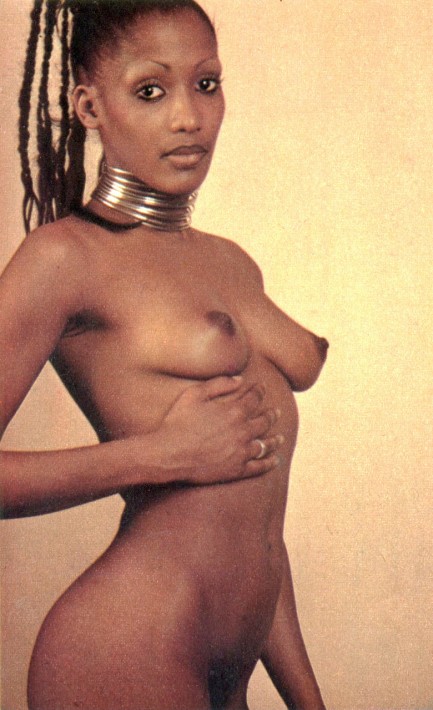
Above is a lovely image of a person we guarantee you'll find very interesting. Her name is often given as Elizabeth Bagaaya, or Elizabeth Bagaya, but she's also known as Princess Elizabeth of Toro, and she's a Ugandan lawyer, diplomat, politician, and model—not in that order. Let's see if we can get her incredibly wild life story straight. First of all, Bagaaya was a princess because her mother was married to the King of Toro, an ancient kingdom that spanned not only Uganda, but parts of present-day Burundi, Rwanda, Tanzania, and Zaire. Next she was a brilliant student, the first black woman to win admission to the English Bar Association, and, in 1965, Uganda's first female lawyer. In 1967 the Ugandan government under Milton Obote abolished the monarchy and Bagaaya lost her title and became merely a person from a powerful family.
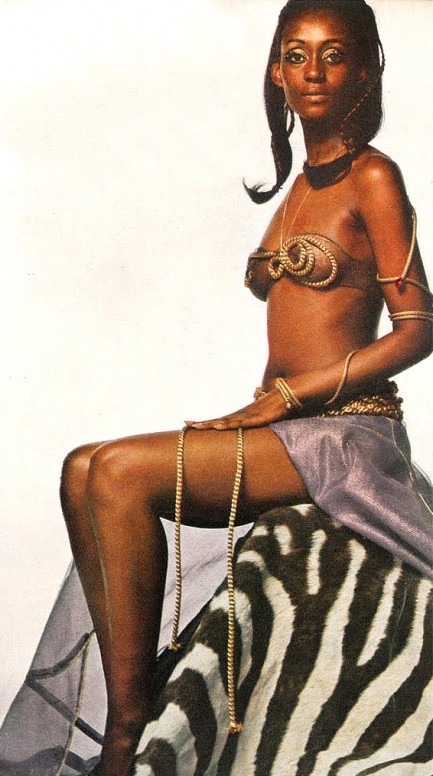 In 1971 Idi Amin overthrew Obote and installed himself as dictator. Taking notice of Bagaaya, who in addition to her legal background had been modeling for a few years, he appointed her Minister of Foreign Affairs. He had an ulterior motive. He wanted her to become one of his wives. Her answer—a hard no. In 1971 Idi Amin overthrew Obote and installed himself as dictator. Taking notice of Bagaaya, who in addition to her legal background had been modeling for a few years, he appointed her Minister of Foreign Affairs. He had an ulterior motive. He wanted her to become one of his wives. Her answer—a hard no. Amin was displeased by her reticence, and placed her under house arrest. He allegedly had her hair forcibly shaved, and generally made her existence hell, all of which prompted her to escape to Nigeria. Just as an aside—Amin killed up to 300,000 people, maybe even more, but to get a sense of how dangerous he was in his personal life, consider the fact that his second wife, Kay, died under unknown circumstances and her body turned up dismembered, and his fifth wife, Sarah, had a previous boyfriend who vanished and is thought to have been beheaded. Amin wanted Bagaaya, but she was in no way safe because of that.
Anyway, moving on, some of Bagaaya's doings overlap, but the bulk of her modeling came after fleeing from Amin, and when she undertook that profession she gave it her all, becoming the first black woman to have a spread in Vogue, and the first to appear on the cover of Harper's Bazaar. As it was a chic thing for models to do at the time, she posed nude, with the results you see. She also acted, appearing in the films Things Fall Apart and Sheena—yeah, the one with Tanya Roberts. In 1979 she returned to Uganda because Amin was gone, and the country was having elections. She helped former president Obote win, later served as Uganda's ambassador to Germany and the Vatican, and was Uganda's High Commissioner to Nigeria. There's more, but why go on? What we've described, ladies and gentlemen, is called a life, one that is ongoing, as Princess Elizabeth remains an important figure, aunt of the current King of Toro, and an outsize and complex personality.
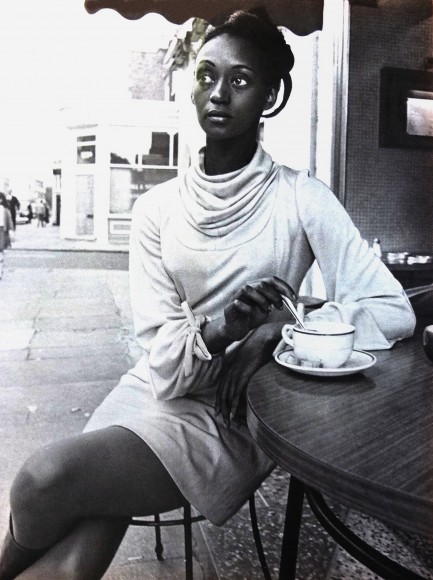
 Sheena embarks a day late on a long journey. 
This photo shows U.S. actress Tanya Roberts in character as Sheena in her 1984 lost world flick Sheena, riding what we suspect is a white horse dyed to look like a zebra, and we were going to make an excuse to share it eventually because it's an amazing image. Unfortunately, it became relevant because Roberts died last week. Bizarrely, it happened a day after her announced death. Somehow her publicist told the world she had died, then learned in the middle of an interview that her employer was still alive. Then Roberts died the next day. That's a new one as far as we know. In any case, she looks goddesslike in this photo, and will be remembered for her roles in the James Bond film A View to a Kill and the television series Charlie's Angels (third iteration). Fare thee well, Sheena.
 Ever get the feeling you've met someone before? 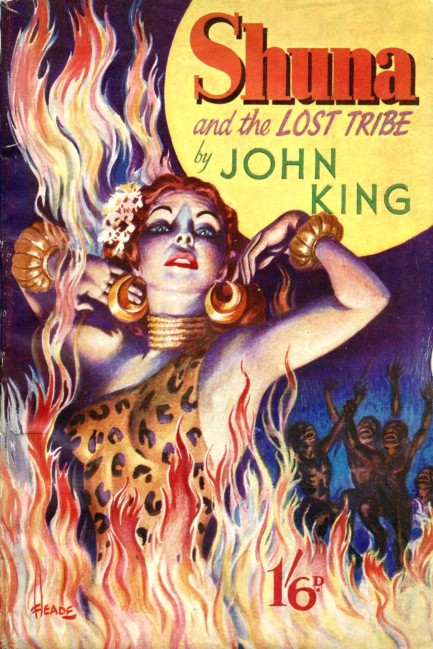 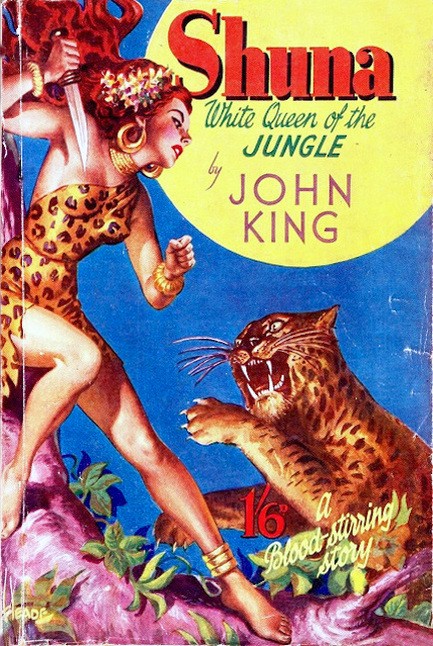
Shuna and the Lost Tribe and Shuna White Queen of the Jungle were written by British author John King, aka Ernest L. McKeag, and reached bookstores via Harborough Publishing in 1951. Shuna is exactly what she seems to be—the archetypal Western literary fantasy of a naturalistic and uncorrupted white woman maintaining semi-sexual thralldom over black hordes who look on with wonder but never, ever get to touch. She's also a virtual copy, right down to the form-fitting leopardskin tunic, of the character Sheena, who appeared in the 1930s, and was part of a wave of lost world literature, comics, and movies that came after the runaway success of Edgar Rice Burroughs' 1912 novel Tarzan of the Apes. We're a little surprised King was able to basically steal Sheena's name. He seems to have gotten away with it, though—we found no mention in the historical record of legal trouble. Maybe it's like the whole Britney Spears vs. Britney Rears thing. The name is close, but juuust different enough to avoid a lawsuit. Anyway, the cover art is really the thing to focus on here. We love these. They're two of the most striking efforts we've seen from the incomparable Reginald Heade, and a reminder we need to feature him more.
 Keep staring, buster, and I’ll show you how we deal with problems in my neck of the woods. 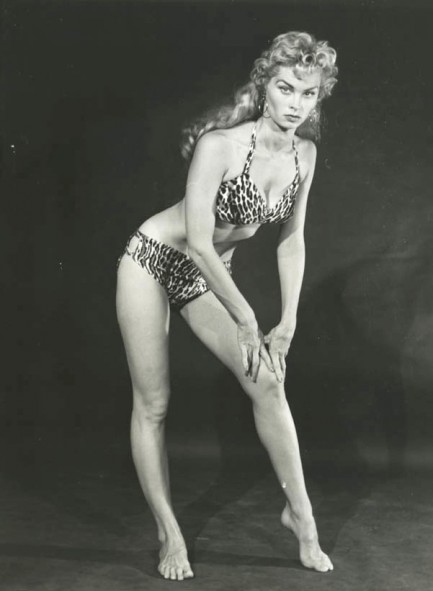
Irish McCalla was an American actress who gained fame playing the character Sheena in television’s Sheena: Queen of the Jungle from 1955 to 1956. The legend goes that an executive from the as-yet-uncast series was on a California beach when he saw McCalla throwing a bamboo spear. What are the odds of that, right? In any case, Nassour Studios signed her up and the rest is history. The above shot, which nicely captures McCalla’s allure and physicality—i.e., she looks quite sexy but also seems ready to flip instantly into beatdown mode—is from 1955.
|
 |

The headlines that mattered yesteryear.
2003—Hope Dies
Film legend Bob Hope dies of pneumonia two months after celebrating his 100th birthday. 1945—Churchill Given the Sack
In spite of admiring Winston Churchill as a great wartime leader, Britons elect
Clement Attlee the nation's new prime minister in a sweeping victory for the Labour Party over the Conservatives. 1952—Evita Peron Dies
Eva Duarte de Peron, aka Evita, wife of the president of the Argentine Republic, dies from cancer at age 33. Evita had brought the working classes into a position of political power never witnessed before, but was hated by the nation's powerful military class. She is lain to rest in Milan, Italy in a secret grave under a nun's name, but is eventually returned to Argentina for reburial beside her husband in 1974. 1943—Mussolini Calls It Quits
Italian dictator Benito Mussolini steps down as head of the armed forces and the government. It soon becomes clear that Il Duce did not relinquish power voluntarily, but was forced to resign after former Fascist colleagues turned against him. He is later installed by Germany as leader of the Italian Social Republic in the north of the country, but is killed by partisans in 1945.
|

|
|

It's easy. We have an uploader that makes it a snap. Use it to submit your art, text, header, and subhead. Your post can be funny, serious, or anything in between, as long as it's vintage pulp. You'll get a byline and experience the fleeting pride of free authorship. We'll edit your post for typos, but the rest is up to you. Click here to give us your best shot.

|
|


 In 1971 Idi Amin overthrew Obote and installed himself as dictator. Taking notice of Bagaaya, who in addition to her legal background had been modeling for a few years, he appointed her Minister of Foreign Affairs. He had an ulterior motive. He wanted her to become one of his wives. Her answer—a hard no.
In 1971 Idi Amin overthrew Obote and installed himself as dictator. Taking notice of Bagaaya, who in addition to her legal background had been modeling for a few years, he appointed her Minister of Foreign Affairs. He had an ulterior motive. He wanted her to become one of his wives. Her answer—a hard no.











































































